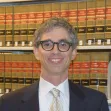Exclusives
FEATURE
Where Will We All Park? A Slightly Premature Case Study of Hoboken, New Jersey
Hoboken, New Jersey's Department of Transportation and Parking Director Ian Sacs offers this profile of his city and discusses how the dense but car-enamored city is trying to tackle the contemporary urban parking problem.
BLOG POST
New Books Depict Car Culture at a Turning Point
<p> <a href="http://www.amazon.com/Crash-Course-American-Automobile-Industrys/dp/1400068630/ref=sr_1_1?ie=UTF8&s=books&qid=1265641815&sr=1-1"><strong>Crash Course: </strong></a><strong><a href="http://www.amazon.com/Crash-Course-American-Automobile-Industrys/dp/1400068630/ref=sr_1_1?ie=UTF8&s=books&qid=1265641815&sr=1-1">The American Automobile Industry's Road from Glory to Disaster</a><br /> By Paul Ingrassia<br /> Random House, 306 pages, $32</strong> </p> <p> <a href="http://www.amazon.com/Carjacked-Culture-Automobile-Effect-Lives/dp/0230618138/ref=sr_1_1?ie=UTF8&s=books&qid=1265641921&sr=1-1"><strong>Carjacked: The Culture of the Automobile</strong> </a><strong><a href="http://www.amazon.com/Carjacked-Culture-Automobile-Effect-Lives/dp/0230618138/ref=sr_1_1?ie=UTF8&s=books&qid=1265641921&sr=1-1">and its Effect on Our Lives</a><br /> By Catherine Lutz and Anne Lutz Fernandez<br /> Palgrave, 272 pages, $34</strong> </p> <p> Automobiles dominate our economies, our cities and our popular culture. As these new titles make abundantly apparent, they also tend to imbue their makers and owners with either delusions or arrogance that can lead to dangerously misguided decision-making, both behind the wheel and in corporate boardrooms.
BLOG POST
Why not rail?
<p> </p> <p> When faced with the costs and logistics of rail, planners and city officials increasingly seem to favor Bus Rapid Transit (BRT), a trend likely to continue through the current recession. But even with the many persuasive arguments for BRT, the nagging question remains: why not rail? <br /> <br />
BLOG POST
In Olympic year, Vancouver chooses LEED™ Gold for private buildings!
<p> Followers of Vancouver city planning will remember that in 2008, as part of the approval of the EcoDensity Initiative, our Council approved what remains (we think) the highest green standard for private sector building design in North America. The 2008 policy requires that buildings that go through rezonings (representing most buildings built in Vancouver) must establish that their design, at approval, is capable of achieving LEED™ Silver. We actually nick-named it "Silver Plus", because we mandated that there be a minimum of 3 energy points, 1 water point, and 1 storm water point, emphasizing the things that matter most to us.
FEATURE
The Right Interventions to Restore Confidence in Weak Markets
Housing affordability is too often seen as the way to stabilize and revitalize weak markets. Neighborhood planning consultants Charles Buki and Elizabeth Humphrey Schilling argue that interventions in weak markets must encourage investment by improving market confidence.
BLOG POST
Taming the Office Park
<p> Most attempts to regulate suburban development have focused on containing the growth of suburban housing. But such regulation, by restricting the supply of buildable land, risks incresing housing prices. And from a more libertarian perspective, an individual's interest in choosing to "drive to qualify" may seem quite appealing. Attempts to regulate commercial suburban development do not involve the same sentimental considerations as limits on residential development, but do risk increasing prices for commercial land, thus increasing prices for everything else. </p>
BLOG POST
Images for Planners: More Resources
<p class="MsoNormal"> Some time ago I noted a number of terrific<a href="/node/34290" target="_blank"> image resources</a> for urban planners. This blog highlights some additional sources. </p>
FEATURE
Carjacked: The Culture of the Automobile and Its Effect on Our Lives
Planetizen talks with Anne Lutz Fernandez, author of the new book <em>Carjacked: The Culture of the Automobile and Its Effect on Our Lives,</em> about how Americans feel about their cars, the Starbucks Effect, and the built environment.
BLOG POST
Accessibility, Mobility and Automobile Dependency
<p style="margin: 0cm 0cm 10pt" class="MsoNormal"> <span style="font-family: Calibri; font-size: small">Let me wade into an ongoing debate among fellow Planetizen bloggers </span><a href="/node/42367"><span style="font-family: Calibri; font-size: small">Samuel Staley</span></a><span style="font-family: Calibri; font-size: small"> and </span><a href="/node/42323"><span style="font-family: Calibri; font-size: small">Michael Lewyn</span></a><span style="font-family: Calibri; font-size: small"> concerning the meanings of <em>accessibility</em> and <em>mobility,</em> and their implications for transportation and land use policy. </span> </p>
BLOG POST
Who's Afraid of the Big Bad Box?
<p> As a young kid, skirting aimlessly throughout my suburban municipality from one car-optimized shopping center to the next on my bicycle in search of stimulation (and perhaps trouble), I vividly recall - though I likely didn't describe it as - the internal conflict between interesting commercial destinations on the inside, and the banal, cruel approach to these places on the outside. Although the primitive human desires of my psyche subconsciously longed for a central place to congregate with other lost children of the suburbs, I never had a downtown; I never had a community center. In this vacuum, I compensated with all that was available. </p>
FEATURE
Notes on Structural Change: Redefining the Problem of Weak Markets
The foreclosure crisis spreading across America has burdened cities and neighborhoods with value-draining vacancies and abandoned properties. To counteract the economic havoc they've caused, planners and policymakers must focus on restoring confidence in the market, according to neighborhood planning consultants Charles Buki and Elizabeth Humphrey Schilling.
BLOG POST
Planning for "Dickensian Gloom"? Refuting Critics of Smart Growth (Again)
<span>It is well-known in planning circles that Smart Growth has come under attack by (mostly libertarian) think tanks and pundits hostile to any form of urban planning that doesn’t leave land use decisions up to the “magic” of the free market. While their reports may get a lot of press, a close reading of most of their rhetoric reveals that it is largely based on a selective use of data, fallacious argumentation and hyperbole.
BLOG POST
Thinking Through the Right Transportation in the Right Place at the Right Time
<p style="margin: 0in 0in 0pt" class="MsoNormal"> <span style="font-family: Times New Roman; font-size: small">In an earlier post, </span><a href="/node/42367"><span style="font-family: Times New Roman; color: #800080; font-size: small">I discussed the difference between mobility, accessibility, and transportation technology</span></a><span style="font-family: Times New Roman; font-size: small">. In today’s post, I want to discuss what I think is the next step in this taxonomy in terms of the implications for the built environment and urban planning. More specifically, we need to move beyond the idea that certain transportation technologies—whether it is a car, a bus, a train, or our feet—are substitutes.
FEATURE
Moving the Tipping Point for Creative Places
Human-scaled, creative development isn't getting built because most of the money in real estate comes from institutional investors that prefer predictable, large scale projects like subdivisions and strip malls, says Neil Takemoto of CoolTown Beta Communities.
FEATURE
On Top of the World: Looking Down from Dubai's Burj Khalifa
The world's tallest building is now open in Dubai. Christopher Corbett takes you up to the 124th floor.
BLOG POST
The Country's Best Urban Bike Commute?
<!--StartFragment--><p class="MsoNormal"><span style="font-size: 10pt; font-family: Verdana">More than two years years ago I chronicled my <a href="/node/26876">daily bicycle commute in Miami</a>. The 8-mile trip was as representative of Miami's built and socio-cultural landscape as it was harrowing. </span></p><p class="MsoNormal"><span style="font-size: 10pt; font-family: Verdana">While that city has surely made progress in the pas two years, I'd be lying if I didn't disclose that I partially moved to New York City because of the progress being made in designing livable streets infrastructure. Quite simply, it feels good to be in a city that "gets it." </span></p>
FEATURE
Watching Urban Change Via Satellite
Recent earthquake response efforts in Haiti showed how comparing satellite imagery could help to identify physical changes in the damaged country and assist rescue workers. That same sort of imagery could play a similar role for urban planners.
BLOG POST
Report from TRB
<span style="font-size: 10pt; line-height: 115%; font-family: 'Arial','sans-serif'"> <p style="margin: 0cm 0cm 10pt" class="MsoNormal"> <span style="font-size: small; font-family: Calibri">Last week I attended the </span><a href="http://www.trb.org/AnnualMeeting2010/Public/AnnualMeeting2010.aspx"><span style="font-size: small; font-family: Calibri">Transportation Research Boards (TRB)</span></a><span style="font-size: small; font-family: Calibri"> 89th annual meeting, which attracted approximately 10,000 transportation professionals from around the globe to Washington DC. More than 2,000 papers were presented at more than 700 sessions, plus several hundred committee meetings took place. Let me share some highlights.</span> </p>
BLOG POST
Are Passenger-Miles a Valid Measure of Anything?
<p class="MsoNormal"> Every so often, one sees an article arguing that one mode of transportation is cheaper, more efficient, or less dangerous than another because it uses less energy/kills more people/costs more per passenger-mile. (1) </p> <p class="MsoNormal"> It seems to me, however, that per passenger-mile comparisions are flawed in one key respect: they assume that trips on any mode of transportation will involve the same mileage, so that if the average driver lives 20 miles from work, the average bus rider will also live 20 miles from work.<span> </span> </p>
FEATURE
Planetizen Picks: Top Twitter Feeds on Urban Planning
Updated for Fall 2010, Planetizen's picks for the best news and observations about urban planning, design and development available on Twitter. Check out the new section of high-speed rail links, and visit our sister site www.hsrnews.com.
Pagination
EMC Planning Group, Inc.
Planetizen
Planetizen
Mpact (formerly Rail~Volution)
Great Falls Development Authority, Inc.
HUDs Office of Policy Development and Research
NYU Wagner Graduate School of Public Service
Urban Design for Planners 1: Software Tools
This six-course series explores essential urban design concepts using open source software and equips planners with the tools they need to participate fully in the urban design process.
Planning for Universal Design
Learn the tools for implementing Universal Design in planning regulations.


































